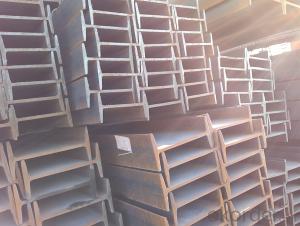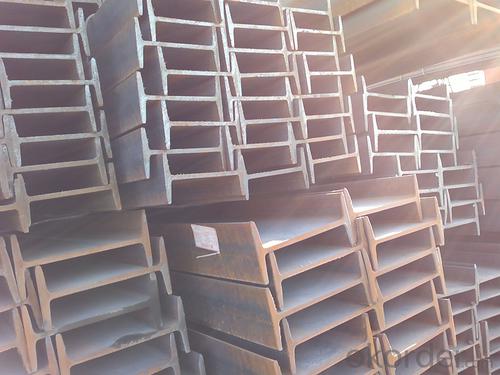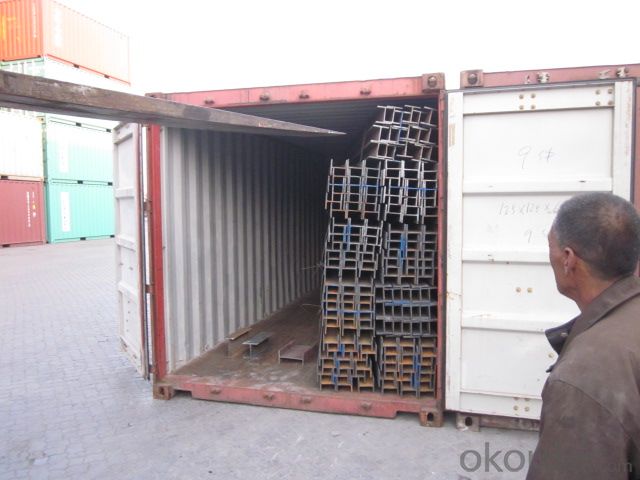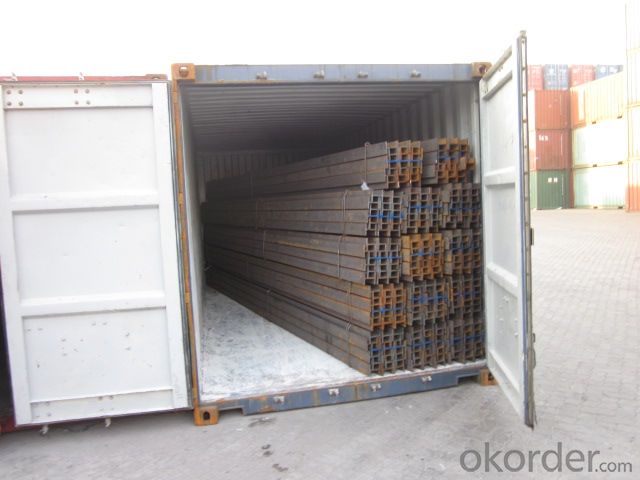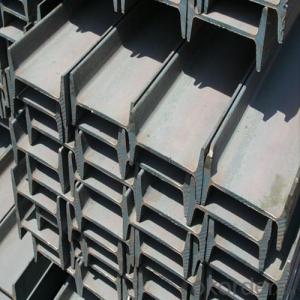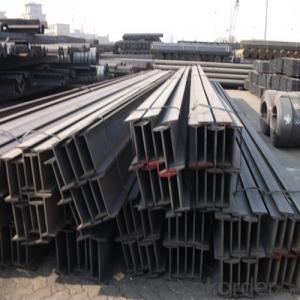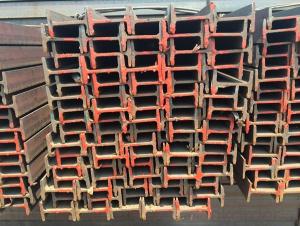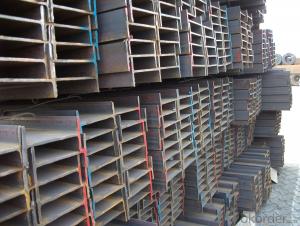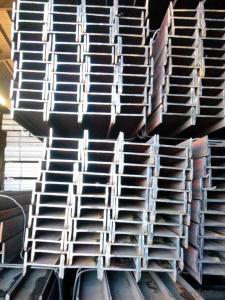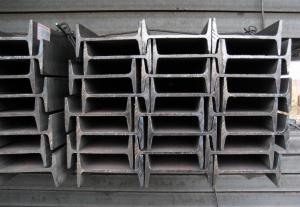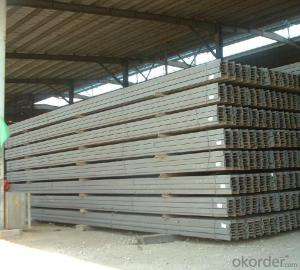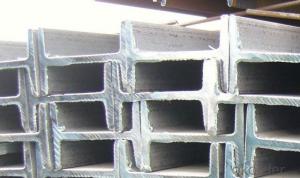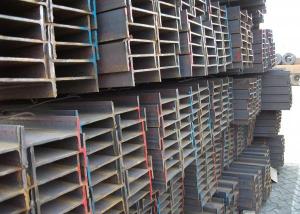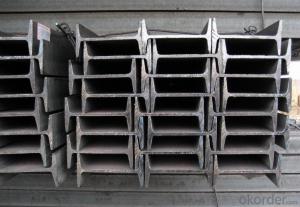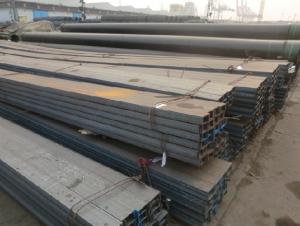EN STANDARD HIGH QUALITY LOWER CARBON IPE
- Loading Port:
- Tianjin
- Payment Terms:
- TT OR LC
- Min Order Qty:
- 5 m.t.
- Supply Capability:
- 1000 m.t./month
OKorder Service Pledge
OKorder Financial Service
You Might Also Like
Product Description:
Specifications of IPE Beam
1. Invoicing on theoretical weight or actual weight as customer request
2. Standard: EN10025, GB Standard, ASTM
3. Grade: Q235B, Q345B, SS400, ASTM A36, S235JR, S275JR
4. Length: 5.8M, 6M, 9M, 12M as following table
5. Sizes: 80mm-270mm
Dimensions(mm) | |||||
h | b | s | t | Mass Kg/m | |
IPE80 | 80 | 46 | 3.80 | 5.20 | 6.00 |
IPE100 | 100 | 55 | 4.10 | 5.70 | 8.10 |
IPE120 | 120 | 64 | 4.80 | 6.30 | 10.40 |
IPE140 | 140 | 73 | 4.70 | 6.90 | 12.90 |
IPE160 | 160 | 82 | 5.00 | 7.40 | 15.80 |
IPE180 | 180 | 91 | 5.30 | 8.00 | 18.80 |
IPE200 | 200 | 100 | 5.60 | 8.50 | 22.40 |
IPE220 | 220 | 110 | 5.90 | 9.20 | 26.20 |
IPE240 | 240 | 120 | 6.20 | 9.80 | 30.70 |
IPE270 | 270 | 135 | 6.60 | 10.20 | 36.10 |
Appications of IPE Beam
1. Supporting members, most commonly in the house raising industry to strengthen timber bears under houses. Transmission line towers, etc
2. Prefabricated structure
3. Medium scale bridges
4. It is widely used in various building structures and engineering structures such as roof beams, bridges, transmission towers, hoisting machinery and transport machinery, ships, industrial furnaces, reaction tower, container frame and warehouse etc.
Package & Delivery of IPE Beam
1. Packing: it is nude packed in bundles by steel wire rod
2. Bundle weight: not more than 3.5MT for bulk vessel; less than 3 MT for container load
3. Marks: Color marking: There will be color marking on both end of the bundle for the cargo delivered by bulk vessel. That makes it easily to distinguish at the destination port.
4. Tag mark: there will be tag mark tied up on the bundles. The information usually including supplier logo and name, product name, made in China, shipping marks and other information request by the customer.
If loading by container the marking is not needed, but we will prepare it as customer request.
5. Transportation: the goods are delivered by truck from mill to loading port, the maximum quantity can be loaded is around 40MTs by each truck. If the order quantity cannot reach the full truck loaded, the transportation cost per ton will be little higher than full load.
6. Delivery of IPE Beam: 30 days after getting L/C Original at sight or T/T in advance
Production flow of IPE Beam
Material prepare (billet) —heat up—rough rolling—precision rolling—cooling—packing—storage and transportation
- Q: How do steel I-beams perform in terms of thermal insulation?
- In terms of thermal insulation, steel I-beams exhibit poor performance. Due to steel's high conductivity, it readily facilitates the transfer of heat between surfaces. Consequently, steel I-beams prove inadequate at insulating heat and fail to prevent the movement of thermal energy within a structure. To ensure satisfactory insulation, supplementary materials like foam or fiberglass must accompany steel I-beams.
- Q: Standard for welding quality of I-beam
- The narrow flange H steel is suitable for beams or columns, while wide flange h and H steel piles are suitable for axial compression members or bending members. Ordinary I-beam, light I-beam compared with HW, HN steel, under the premise of equal weight, W, IX and iy are not as good as H steelI-beam is also called steel girder (English name Universal Beam). It is a strip of steel with an I-shaped section. I-beam is made of ordinary I-beam and light i-beam. It is a section steel whose shape is trough.
- Q: What are the common connections details for steel I-beams?
- The connection details for steel I-beams can vary depending on the specific application and design requirements. However, structural steel construction commonly employs several connection methods. One method frequently used is the welded connection, where the flanges and web of the I-beam are welded to the supporting structure, such as columns or beams. Welded connections offer exceptional strength and rigidity, making them suitable for heavy-duty applications with high loads. Another method is the bolted connection, where bolts are utilized to connect the I-beam to the supporting structure. Bolted connections provide flexibility during installation and allow for easy disassembly if necessary. They are often employed in applications that foresee adjustability or future modifications. Furthermore, there exist hybrid connection methods that combine both welding and bolting. These connections strike a balance between the strength and rigidity of welded connections and the flexibility of bolted connections. Hybrid connections are commonly chosen when specific design requirements call for a combination of these characteristics. It is crucial to emphasize that the specific connection details for steel I-beams must adhere to local building codes and industry standards. Structural engineers and design professionals typically determine the appropriate connection method based on factors such as load requirements, structural stability, and construction feasibility.
- Q: Are there any safety considerations when working with steel I-beams?
- Yes, there are several safety considerations when working with steel I-beams. Some key considerations include ensuring proper lifting and rigging techniques to prevent accidents, using appropriate personal protective equipment (PPE) such as hard hats and safety glasses, implementing fall protection measures when working at heights, and conducting regular inspections to identify any structural defects or damages that may compromise the integrity of the I-beams. Additionally, it is crucial to follow safe work practices and receive adequate training to mitigate potential hazards associated with handling and working around steel I-beams.
- Q: How do steel I-beams perform in terms of thermal conductivity?
- Steel I-beams are renowned for their remarkable thermal conductivity, which refers to a material's capacity to conduct heat. Steel, being one of the most commonly utilized thermally conductive materials in construction, ensures that heat can be proficiently transferred from one location to another. The impressive thermal conductivity of steel I-beams renders them ideal for situations that necessitate or desire heat transfer. In the context of buildings, steel I-beams play a crucial role in evenly distributing heat throughout the structure, thereby guaranteeing a consistently comfortable temperature in various areas. This advantage proves particularly beneficial in sprawling commercial buildings or industrial facilities where maintaining a steady temperature is vital for productivity or occupant comfort. Furthermore, the high thermal conductivity of steel I-beams also makes them suitable for applications that require heat dissipation or removal. For instance, they can be effectively employed in heat exchangers or cooling systems, where their efficient heat conduction capabilities enable the rapid transfer of thermal energy. Nevertheless, it is essential to acknowledge that the notable thermal conductivity of steel I-beams can present challenges in certain scenarios. In regions characterized by extreme temperature variations, these I-beams may facilitate the transfer of heat from warmer to cooler areas, potentially resulting in energy loss and escalated heating or cooling expenses. In such cases, it may be necessary to incorporate additional insulation or thermal barriers to minimize heat transfer. To summarize, steel I-beams possess exceptional thermal conductivity, allowing for efficient heat transfer. This characteristic renders them suitable for applications that require heat distribution or dissipation, although certain situations may warrant additional considerations to optimize energy efficiency.
- Q: Can steel I-beams be used in underground applications?
- Yes, steel I-beams can be used in underground applications. They are commonly used in the construction of underground structures such as tunnels, underground parking lots, and basements. Steel I-beams provide high strength and structural stability, making them suitable for supporting heavy loads and resisting the forces exerted by the surrounding soil or rock.
- Q: What specifications are used for the steel structure of the 10*10? Do I have to use I-beam? Will the iron square be all right?
- Square tube can be, but it is better to buy GB material, otherwise the wall thickness is too thin, can not meet the design requirements ~!
- Q: What are the common finishes for steel I-beams?
- There are various finishes available for steel I-beams, including hot-dip galvanizing, priming and painting, and powder coating. Hot-dip galvanizing is a method that involves coating the steel I-beam with zinc, which protects it against corrosion and ensures its durability. This finish is commonly used in outdoor applications where the I-beam will be exposed to moisture or harsh environmental conditions. Another option is priming and painting, which entails applying a layer of primer to the surface of the I-beam to enhance adhesion, followed by one or more coats of paint. This not only provides a protective barrier against corrosion but also allows for customization in terms of color and appearance. Powder coating is a different finish that entails electrostatically applying a dry powder onto the I-beam's surface. The powder is then cured under heat, resulting in a strong and long-lasting finish. Powder coating offers excellent corrosion resistance, as well as a wide range of color options and a smooth, even appearance. It is important to consider the specific requirements of the application when choosing a finish for steel I-beams. Factors such as the environment, aesthetic preferences, and level of corrosion resistance needed should all be taken into account.
- Q: How do steel I-beams perform in terms of deflection or bending?
- Steel I-beams are renowned for their exceptional deflection and bending capabilities. Their structural design grants them a moment of inertia, which renders them highly resistant to bending or deflection when subjected to a load. The I-beam's shape, characterized by elongated top and bottom flanges connected by a narrower web, facilitates the uniform distribution of the load along the beam's length, thereby minimizing deflection. The robustness of steel further contributes to the I-beam's superior performance. Steel stands as one of the most formidable construction materials, boasting remarkable tensile strength and stiffness. Consequently, steel I-beams can endure substantial loads without succumbing to significant deflection or bending. Additionally, steel I-beams can be reinforced by enlarging their size or incorporating additional stiffeners or bracing. This augmented reinforcement amplifies their resistance to deflection or bending, rendering them suitable for an extensive array of applications, encompassing skyscrapers, bridges, and industrial edifices. In conclusion, the deflection or bending performance of steel I-beams distinguishes itself through the amalgamation of their structural design and the strength of steel. Their ability to uniformly distribute loads and withstand bending or deflection positions them as a reliable choice for diverse construction endeavors.
- Q: What are the standard dimensions for steel I-beams?
- The standard dimensions for steel I-beams vary depending on the specific design and application. However, there are certain standard sizes that are commonly used in construction and engineering projects. The most common sizes for steel I-beams include: - Flange Width: Typically ranging from 2 to 14 inches, the flange width refers to the horizontal dimension of the I-beam's top and bottom sections. - Web Thickness: This refers to the vertical dimension of the I-beam's center section, which connects the top and bottom flanges. Web thicknesses typically range from 0.18 to 1.07 inches. - Flange Thickness: Ranging from 0.36 to 1.22 inches, the flange thickness refers to the thickness of the I-beam's top and bottom sections. These dimensions can vary depending on the load-bearing requirements and the specific structural application of the steel I-beam. It is crucial to consult the relevant engineering and construction standards, as well as structural engineers, for the appropriate sizing and design considerations for any specific project.
Send your message to us
EN STANDARD HIGH QUALITY LOWER CARBON IPE
- Loading Port:
- Tianjin
- Payment Terms:
- TT OR LC
- Min Order Qty:
- 5 m.t.
- Supply Capability:
- 1000 m.t./month
OKorder Service Pledge
OKorder Financial Service
Similar products
Hot products
Hot Searches
Related keywords
